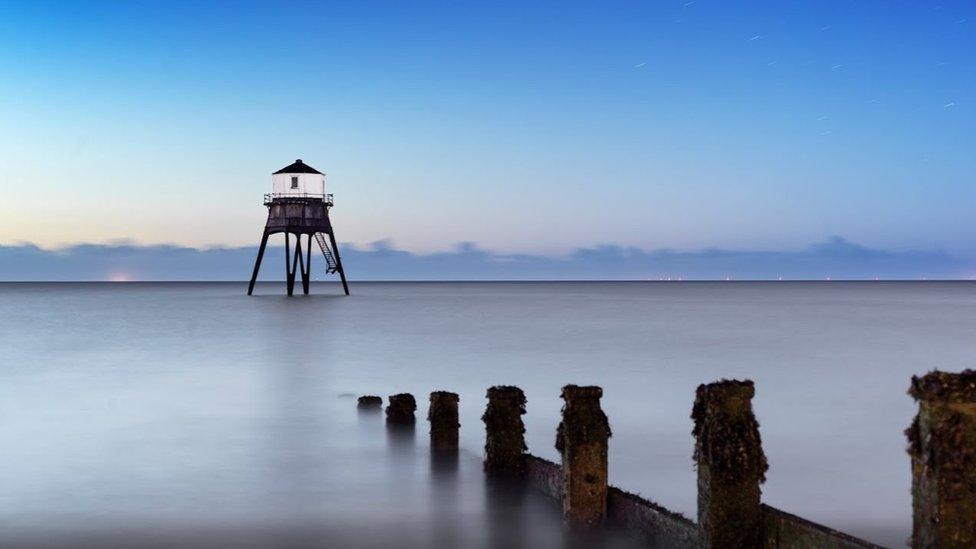Historic England: Shipwreck and Selfridges on 2020 protected list
- Published
- comments

Selfridges department store on Oxford Street in London is one of 423 sites to be added to Historic England's National Heritage List in 2020
A shipwreck, racehorse wash house and world-renowned department store Selfridges have been among the historic sites to have been given extra protection in 2020.
Historic England has added or upgraded 423 National Heritage List sites.
New entries have also included several bridges, churches and a memorial to a lifeboat tragedy.
Also making the list in 2020 were a Victorian railway station, post World War Two tower and Jacobean gardens.
Historic England chief executive Duncan Wilson said: "Despite the challenges that the heritage sector has faced this year, 2020 has seen many brilliant additions to the list.
"We want to ensure England's rich and varied cultural heritage is protected so that the public can continue to cherish the heritage that makes their local places so important."
The Old Brig shipwreck, Seasalter, Kent
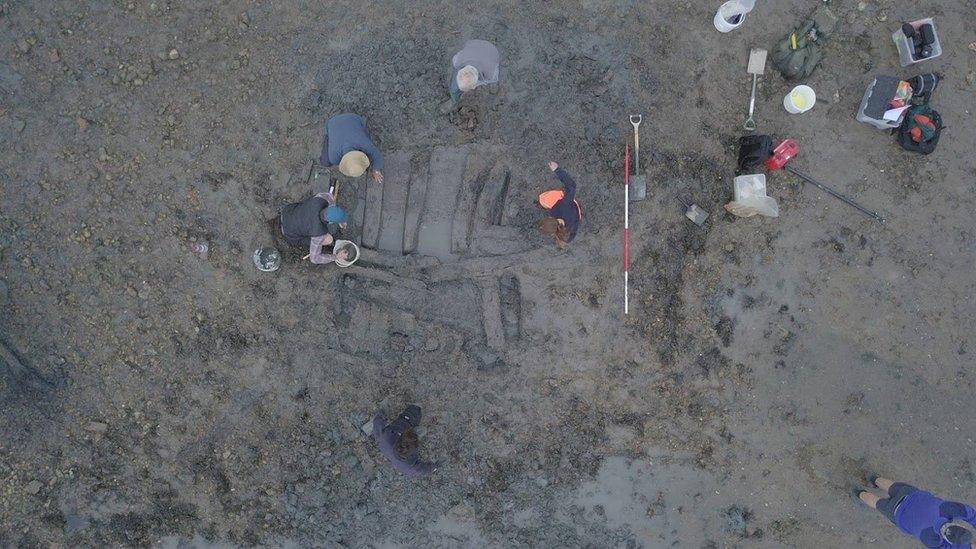
Wessex Archaeology and local archaeologists revealed the remains of the hull
The Old Brig is a well-preserved 18th Century merchant ship that is believed to have been involved in the smuggling of liquor and contraband before sinking.
The wreck has been given protected status as a scheduled monument after being exposed by tides, having lain in the mud in the Thames Estuary for hundreds of years.
An exploration by Wessex Archaeology and local archaeologists revealed the remains of the hull, including framing timbers and decking.
"There is potential for more exciting finds to be found preserved within the lower hull, which could reveal how the sailors lived on board and what goods the ship was carrying," Historic England said.

1, 3 and 5 Park Street, Hatfield, Hertfordshire
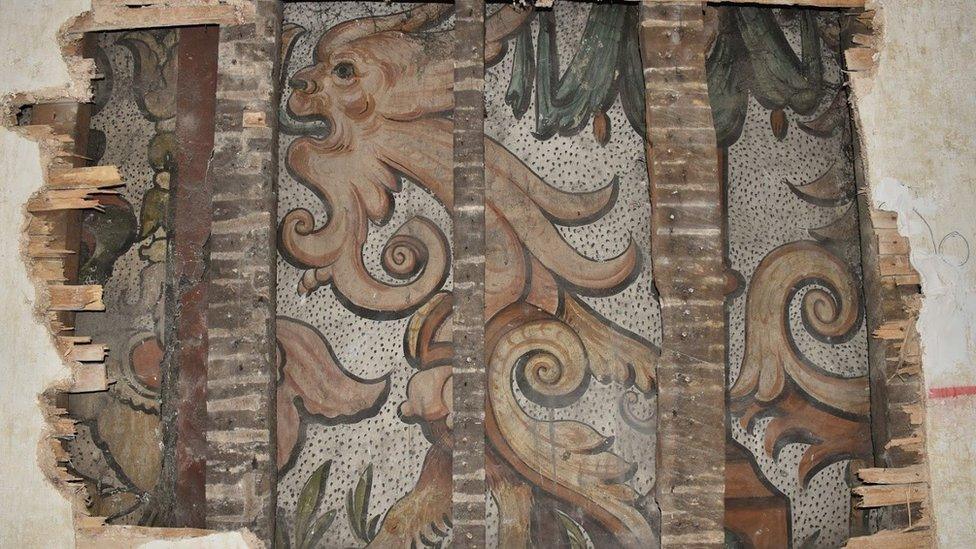
The building contains two significant wall paintings
The building on Park Street has had many uses over the years, most likely beginning as an inn in the mid-17th Century, before it became a home, followed by shops and most recently offices in the late 20th Century.
Upgrading its status from Grade II to Grade II*, Historic England said the "surviving historic fabric" of the building had many notable features, such as square panelling, a late 17th Century oak staircase and two wall paintings "providing valuable insight into the history of how people once decorated their homes".

Beauchamp Lifeboat Memorial, Caister-on-Sea, Norfolk
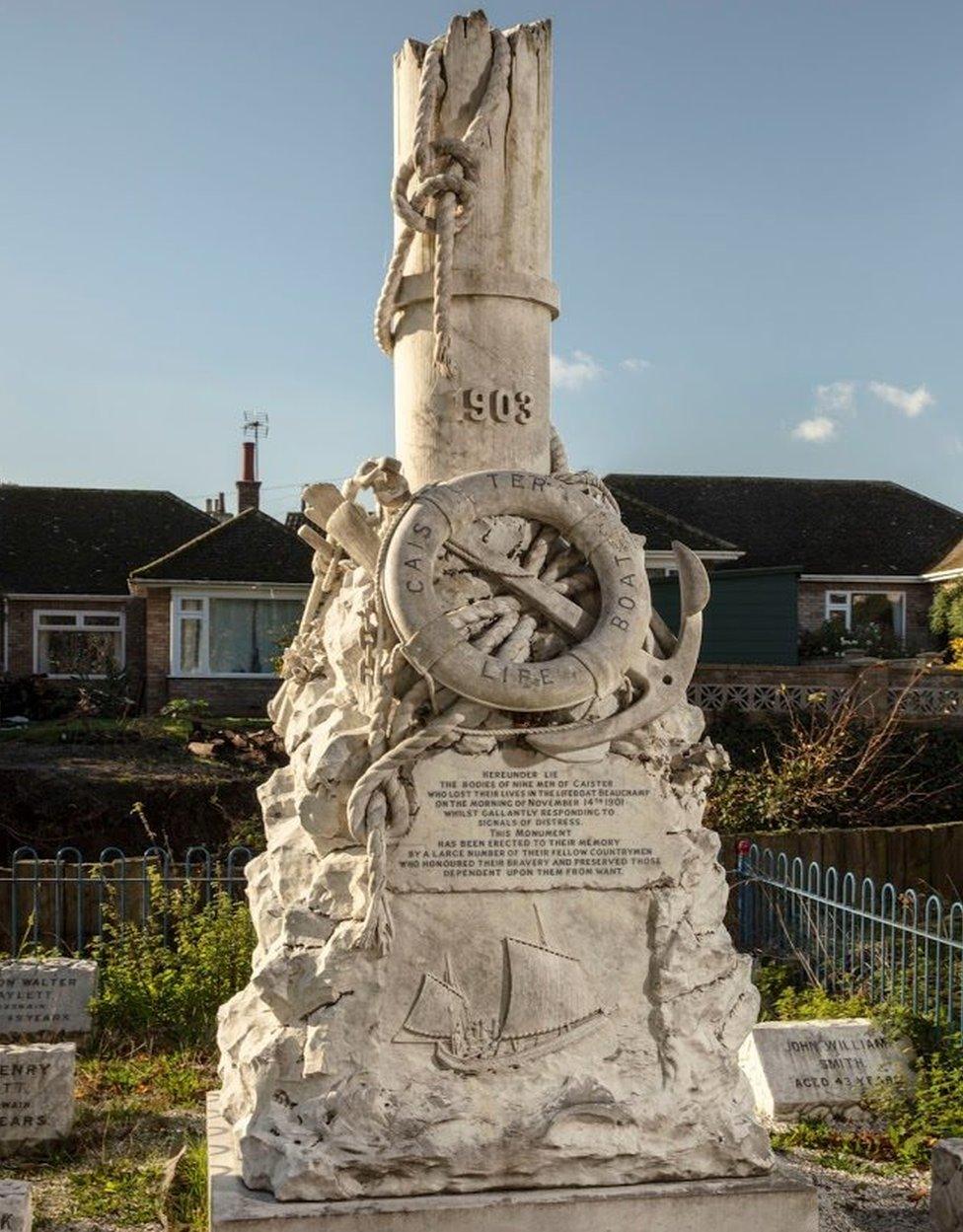
The memorial commemorates nine lifeboat crewmen who died during a rescue in 1903
The Grade II listed memorial was unveiled in 1903 to remember nine crew members who lost their lives during a rescue mission two years earlier that gained national attention.
On a treacherously stormy night in 1901, the Beauchamp was launched in response to distress signals coming from a ship towards Barber Sands. Despite the severity of the storm, the crew managed to get the boat afloat and begin their mission. However, the boat capsized en route, trapping the crew beneath.
When asked during the inquest why they had persevered, the three surviving crew responded: "Going back is against the rules when we see distress signals like that."

St John's Beacon (Radio City Tower), Liverpool
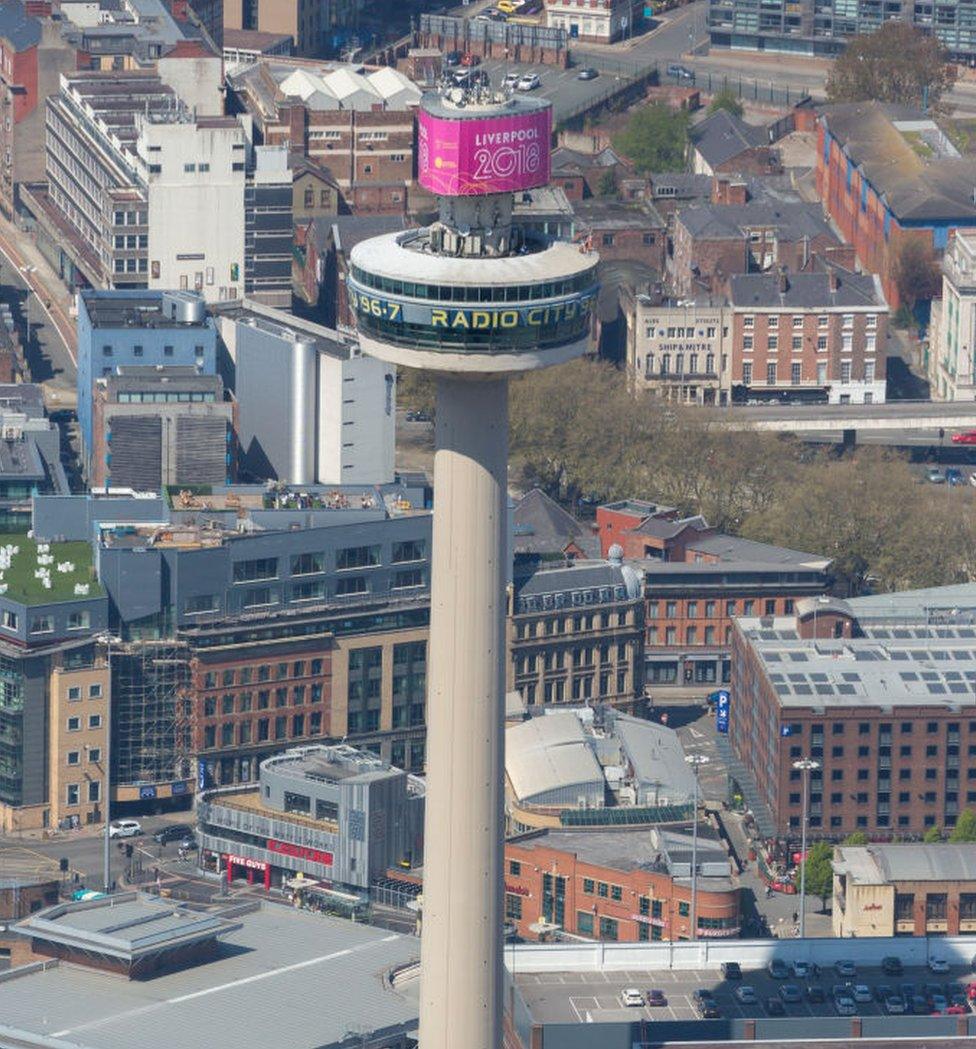
The tower had a revolving restaurant and observation platform at the top offering views over Liverpool
The Grade II listed observation tower was built between 1965 and 1969 and "represents the modern and optimistic vision the country had for the future following the horrors" of World War Two, Historic England said.
It was one of a "handful of progressive observation towers" that were built internationally during the 1960s, with a "design embodying the interest in space travel and popular culture at the time".

Selfridges, Oxford Street, London
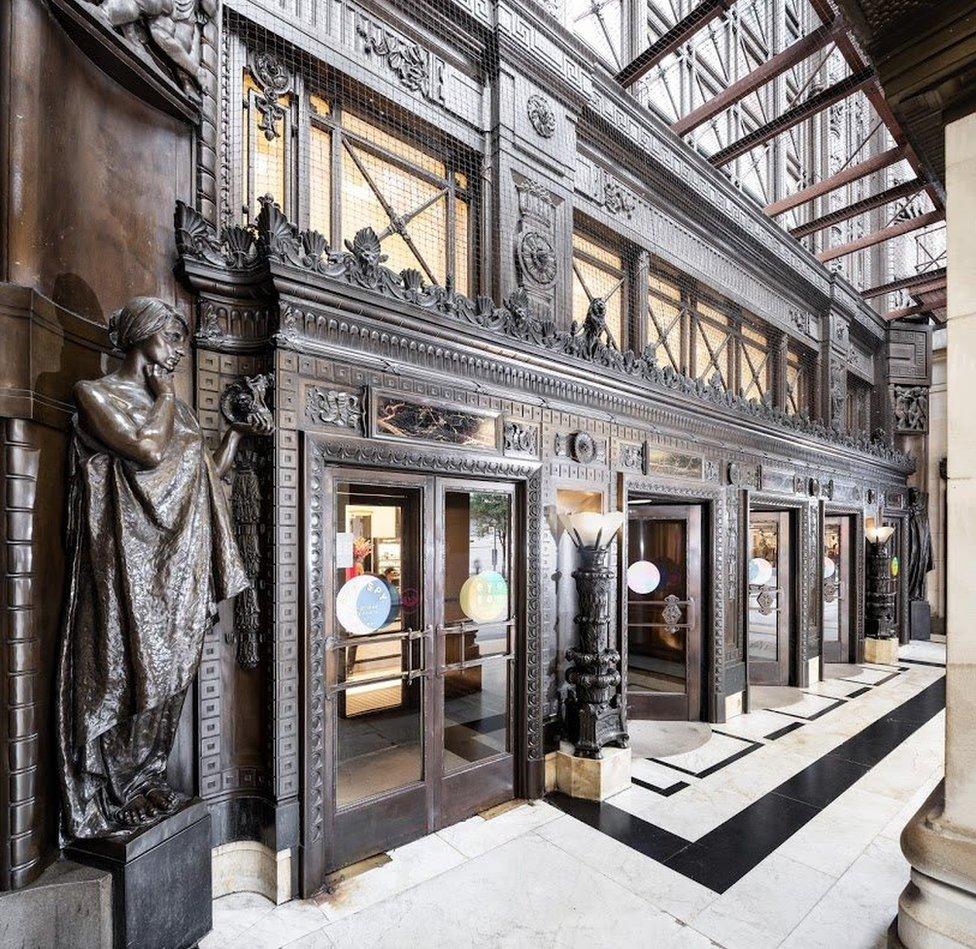
Selfridges has been upgraded to Grade II*
As one of the world's most famous department stores, Selfridges played a huge part in transforming Britain's retail scene at the turn of the 20th Century, Historic England said, and the store has been upgraded from Grade II to Grade II*.
Through "elaborate window dressing, excellent customer service and clever advertising", the department store became a "social and cultural institution" open to the general public, Historic England said. Selfridges also played a significant role during World War Two by housing the SIGSALY scrambling apparatus, which allowed secure communication between the UK and the US.
It was built in four phases between 1906 and 1928 and original features include marble staircases, columns and the long facade shopping arcade.

Retford Railway Station, Retford, Nottinghamshire

Retford Station was built in an Italianate villa style
The Grade II listed station was built between 1891 and 1892 by the Great Northern Railway in an Italianate villa style.
During World War Two, the station was repurposed as a canteen and rest room by the Women's Voluntary Service, serving the forces more than two million meals between 1940 and 1946.

Former Rubbing House, Salisbury Racecourse, Wiltshire
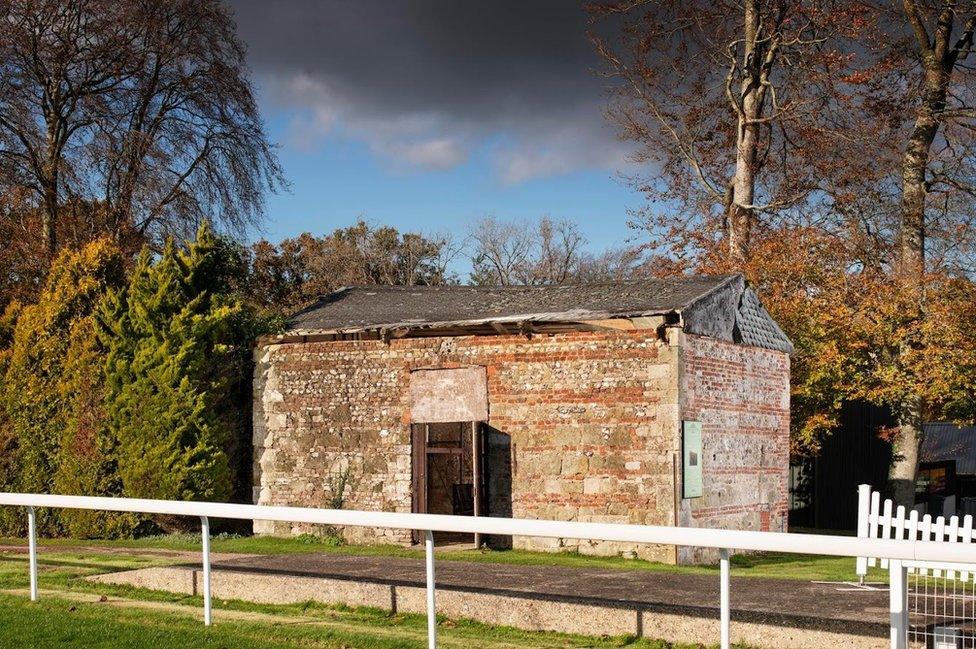
Horses were taken to the rubbing house to be washed and dried after races
The Grade II listed former rubbing house dates to between 1675 and 1706 and is one of the few surviving examples of its kind in the country.
The Rubbing House was where horses would be taken to be washed, dried and rubbed down after racing or training.
The functional elements of the building have remained evident, such as the tall entrance, which would allow the horse and rider to go through the doorway, the tethering rings and the wide doorways designed to protect horses from injury.

Nunn's Bridge, Coggeshall, Essex
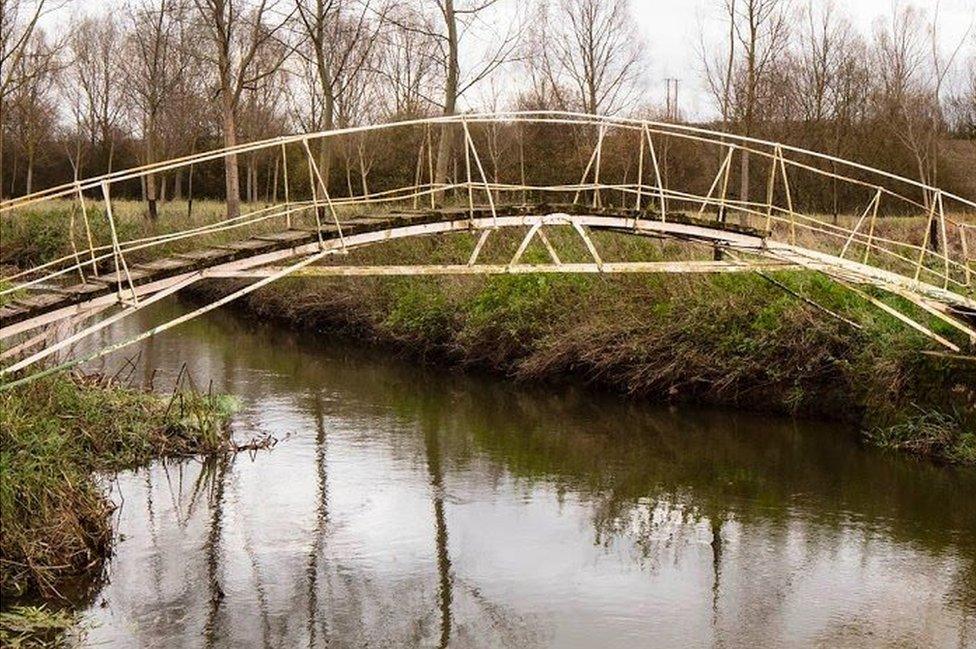
Nunn's Bridge was built as part of Henry Dick Nunn's campaign to let people access the countryside
Grade II listed Nunn's Bridge is a "simple but elegant" wrought iron footbridge spanning the River Blackwater.
Erected in 1892 by social activist Henry Dick Nunn, it has been described as "unique in its design, craftsmanship and installation" and replaced a wooden crossing that was washed away.
Mr Nunn was a campaigner for the welfare of people and animals, and an early advocate of rights of way in the countryside.

Roman Catholic Church of St Mary, Dunstable, Bedfordshire
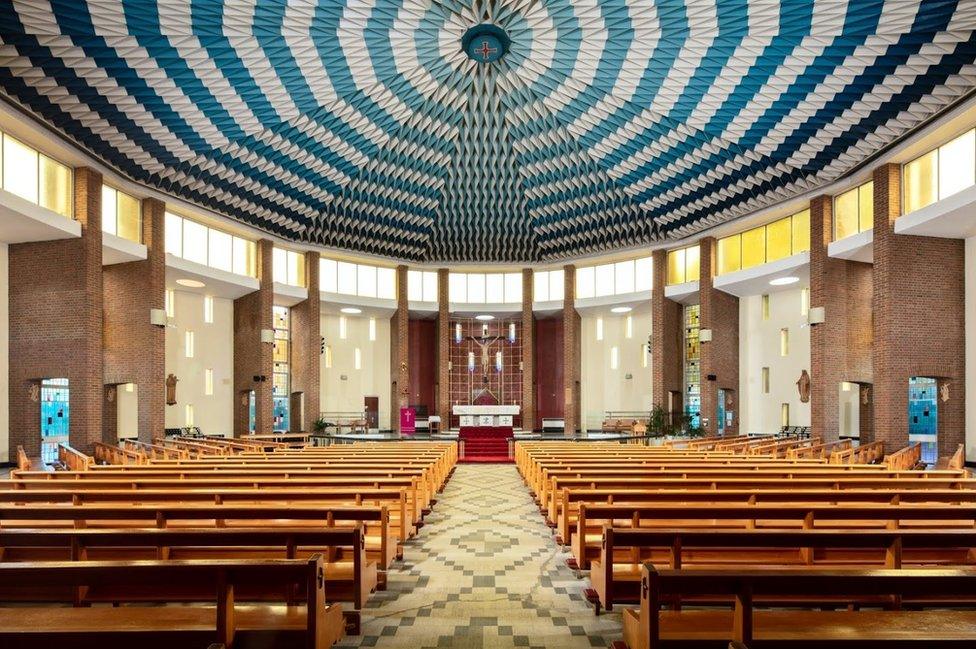
The Roman Catholic Church of St Mary in Dunstable features a striking ceiling
The Grade II listed church was built between 1962 and 1964 to the design of innovative English architect Desmond Williams.
"It is an early example of the impact of the Liturgical Movement on church design with its highly unusual blue and white ceiling following the form of a medieval fan vault," Historic England said.

The Gorhambury Pondyards, St Albans, Hertfordshire
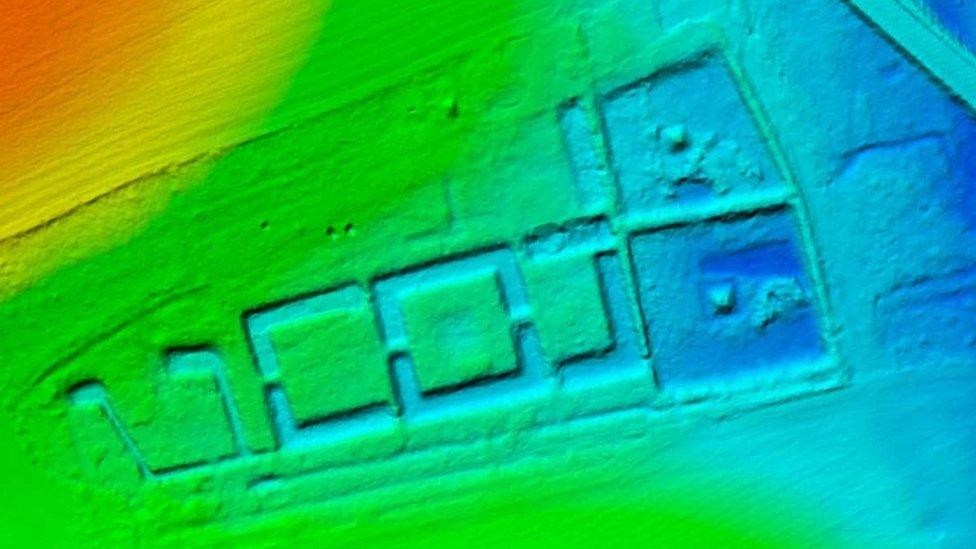
The Pondyards can be seen by a lidar - laser scanning technology
The Pondyards are a series of water gardens that were created in 1608 for Sir Francis Bacon, the English philosopher and statesman who counselled Queen Elizabeth I and King James I.
The water features, which are protected as a scheduled monument, were designed to display aquatic plants or ornamental fish.
The foundations have remained in good condition and it is thought archaeological items may still survive within the banks and base of the ponds.

Gawthorpe Water Tower, West Yorkshire
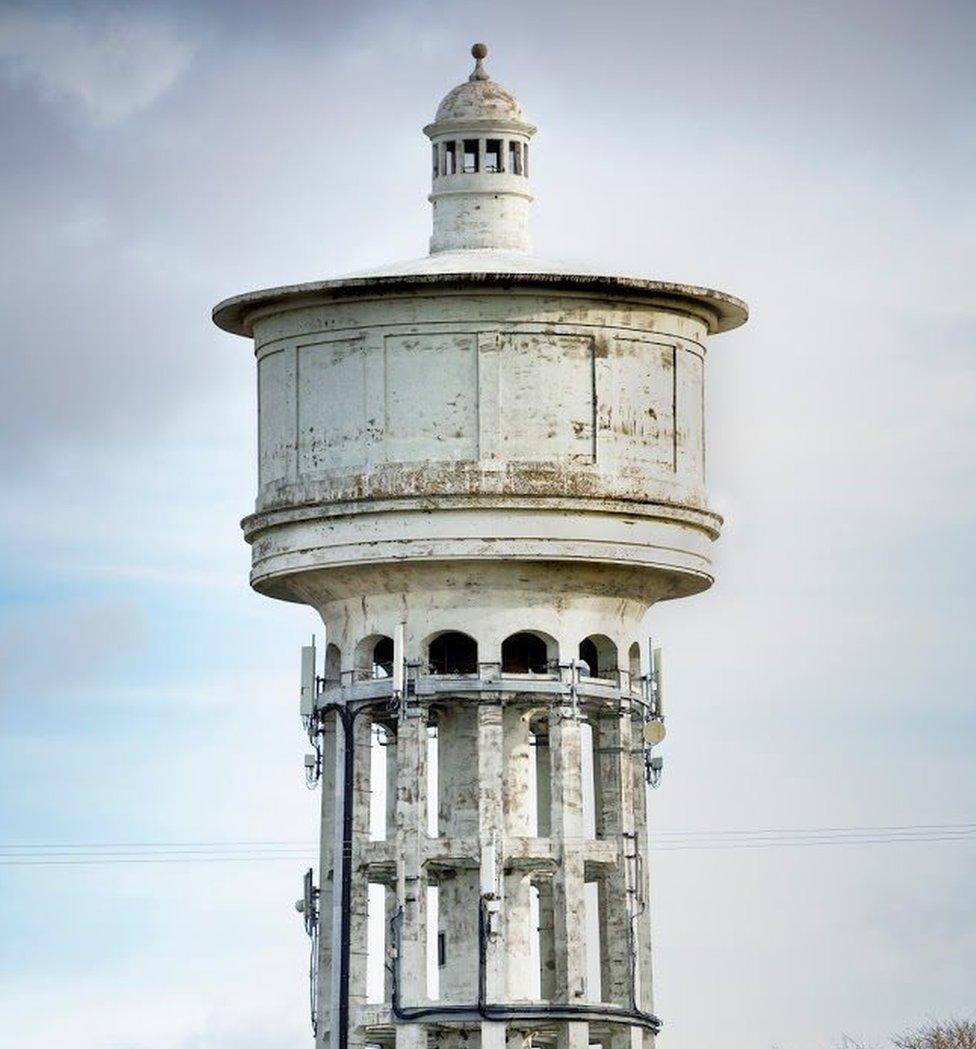
The tower was used to store water until 2006
The Grade II listed tower was built between 1922 and 1928 as part of the now demolished Pildacre Waterworks to store drinking water for the expanding village of Gawthorpe, a purpose it served until 2006.
The water was drawn up from a former mine and pumped from the waterworks to the tower by two engines, fondly known by locals as Maud and Edith.
The tower has since been used to host telecommunications equipment.

The Horse and Jockey, Wednesbury, West Midlands
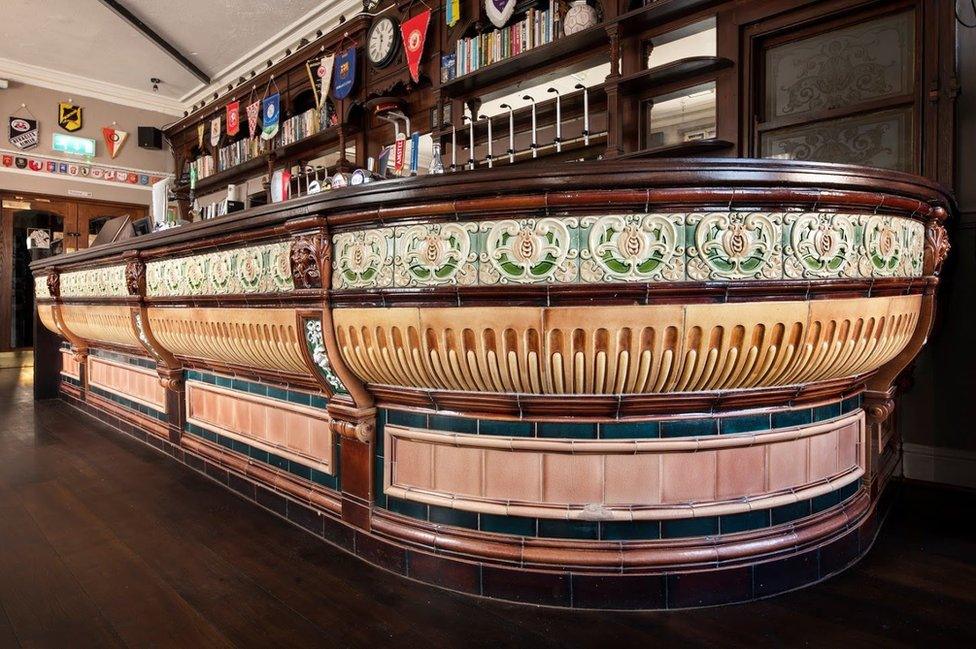
The bar at the Horse and Jockey is one of 12 known examples of a ceramic-fronted bar in England
The Grade II listed Horse and Jockey pub was built in 1899 and has many original features including a ceramic-fronted bar counter which is one of only 12 known examples in England.
Other historic fixtures include the bar back, with rich timber mouldings and decorated mirrors, and the Art Nouveau-style leaded windows.

Graythwaite Hall gardens, Graythwaite, Cumbria
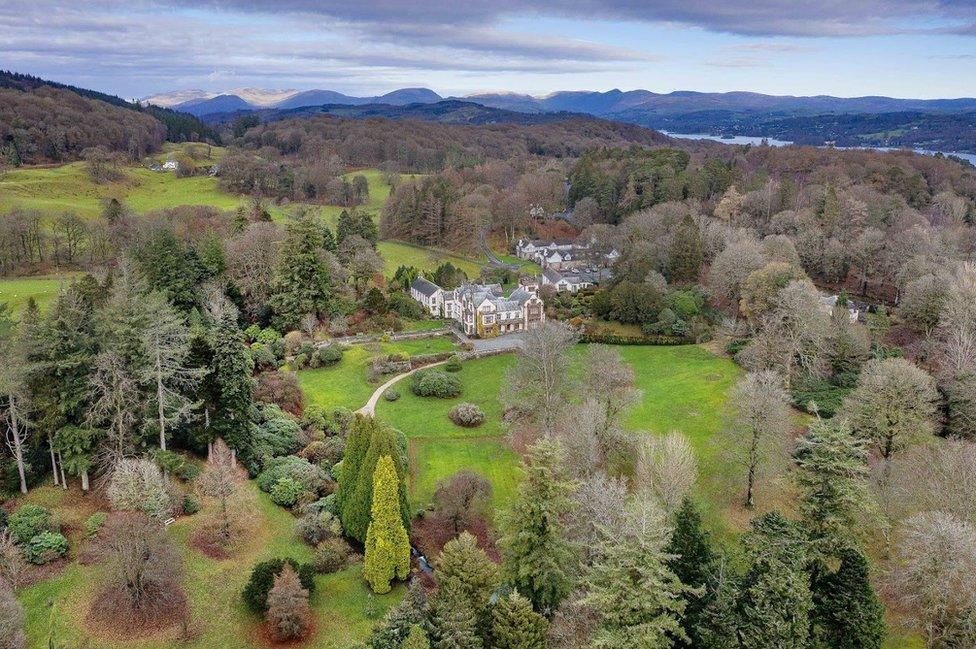
The gardens at Graythwaite Hall have been given Grade II* status
The Grade II* listed gardens were created between 1889 and 1895 by Thomas Mawson, who was widely considered to be the founder of modern landscaping and was one of the most influential garden designers of the early 20th Century.
Surrounded by extensive woods said to have been a favourite of William Wordsworth and Beatrix Potter, the landscape of Graythwaite is "enchanting" and Mawson's gardens "are no exception", Historic England said.

The Church of St Mary, Andover, Hampshire

The Church of St Mary was inspired by Salisbury Cathedral
The church was built between 1840 and 1846 and has been upgraded from Grade II to Grade II*.
The design by Augustus Livesay was inspired by the gothic Salisbury Cathedral and demonstrated the typical church style of that era.

Church of St Mary and Sunday School, Lyonshall, Herefordshire
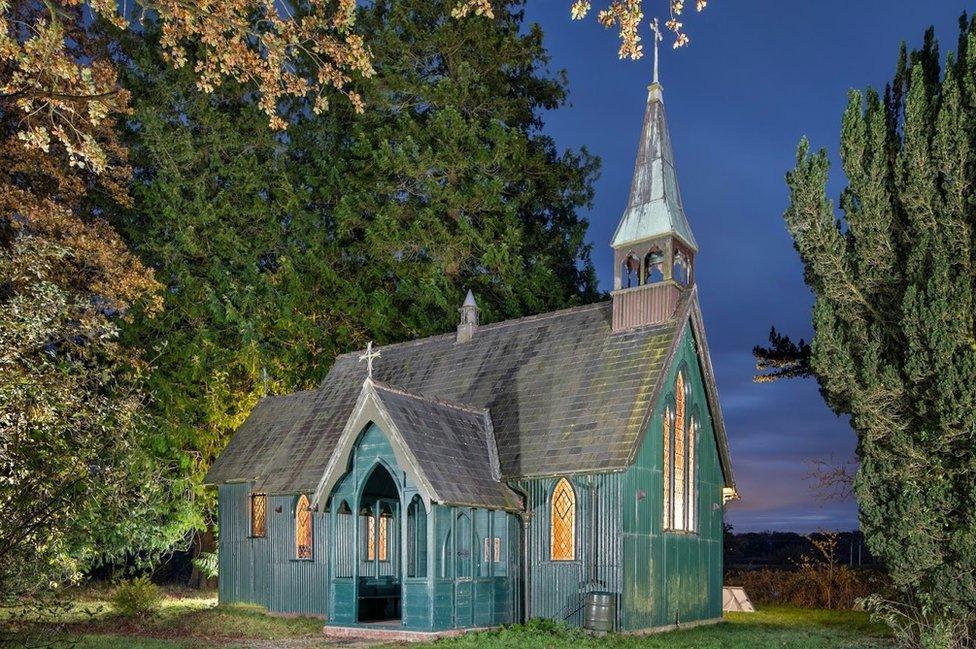
Most corrugated iron prefabricated churches were only meant to be temporary structures
The Grade II listed tabernacle church was built in 1860 using a corrugated iron prefabricated design known as a "tin tabernacle" that has become increasingly rare as such churches were only meant to be temporary structures.
There are only 86 remaining corrugated iron churches - of all denominations - surviving in England, and fewer than 20 of these have been listed.

Southcliff Gardens Seaside Shelter, Scarborough, North Yorkshire
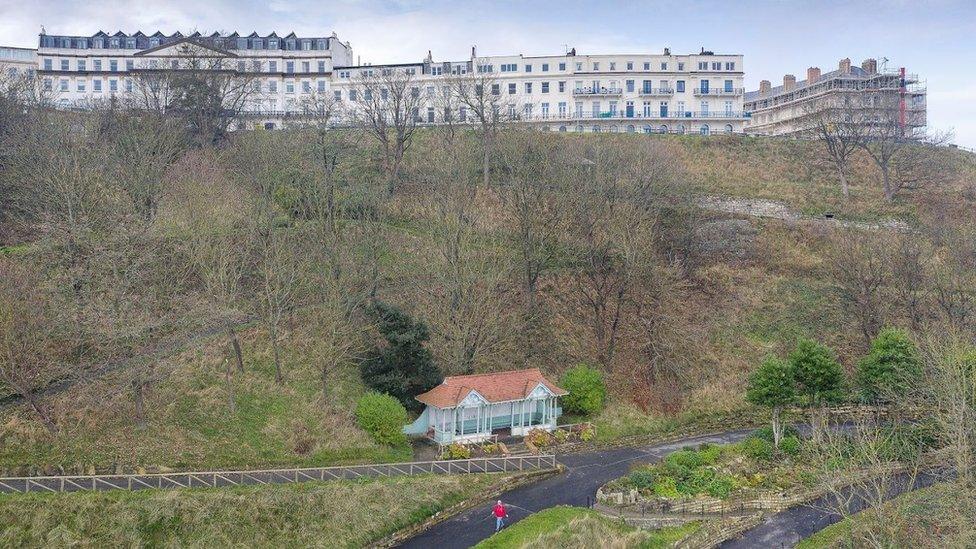
The shelter sits in Southcliff Gardens
The Grade II listed shelter was built from 1897 to 1909 by Frank Alfred Tugwell and was designed to enhance the seaside-goer's experience.
Historic England said the decorative blue and white structure "captures the spirit of Scarborough's colourful history as an important seaside resort".

Ninnage Lodge, Chaxhill, Gloucestershire
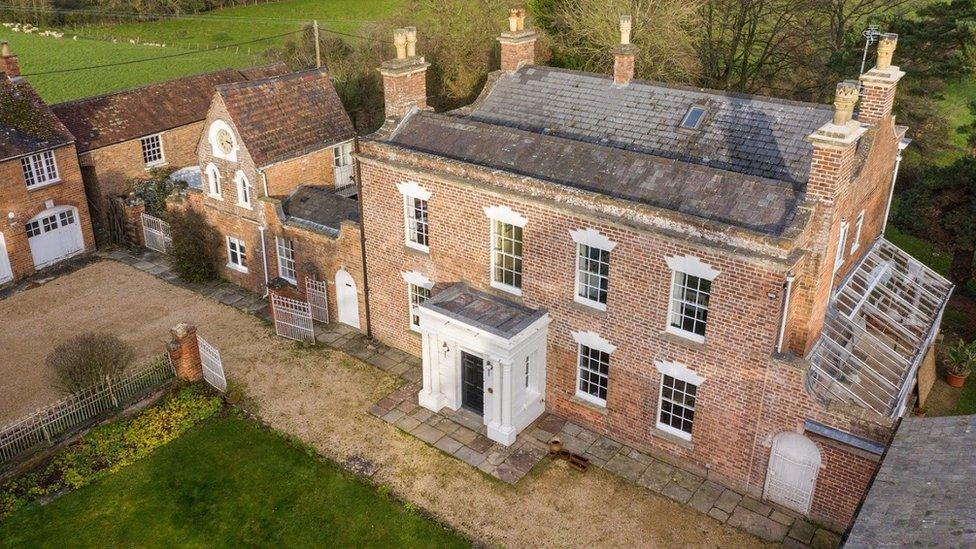
Ninnage Lodge is a "remarkably complete example" of a 19th Century country estate
The Grade II listed lodge illustrated the aspirations of the Asgill Legge family, the owners of the estate through the 19th Century, and also the changing expectations and fashions of estate living at the time.
Complete with clock house, groom's cottage and laundry, the house has survived as a "remarkably complete example" of a small, 19th Century country estate, Historic England said.

East Woodburn Bridge, Hexham, Northumberland
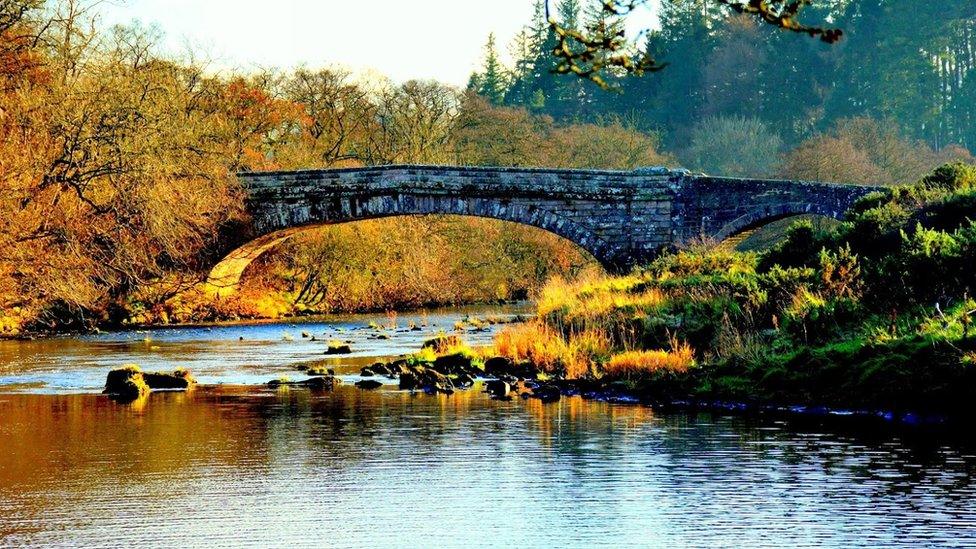
East Woodburn Bridge was an important part of the droving route between England and Scotland
The "elegant" Grade II listed bridge was built in 1832 to replace an earlier 18th Century packhorse bridge, part of which has remained intact.
The bridge across the River Rede was situated on a historic droving route used by farmers to move large numbers of sheep and cattle between England and Scotland.
- Published5 December 2020

- Published28 December 2019
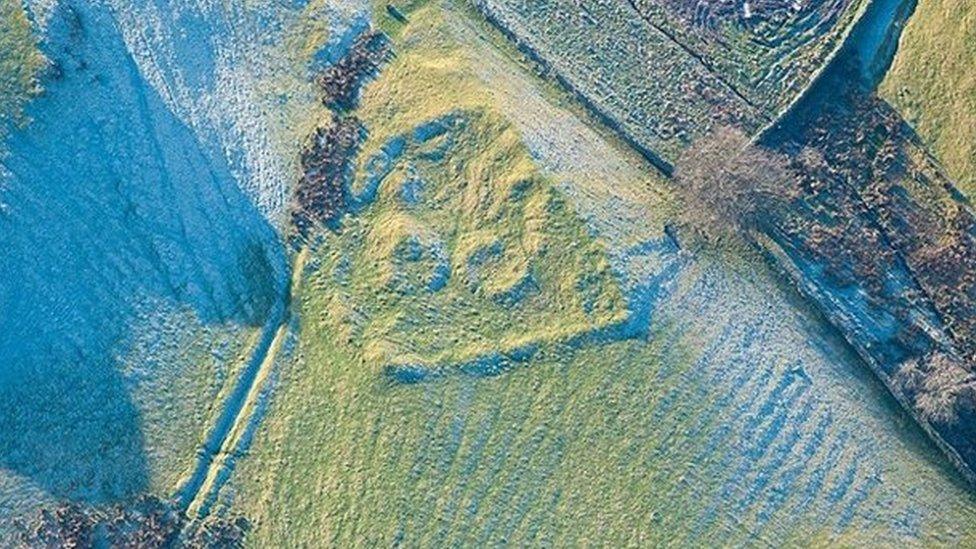
- Published17 October 2019
